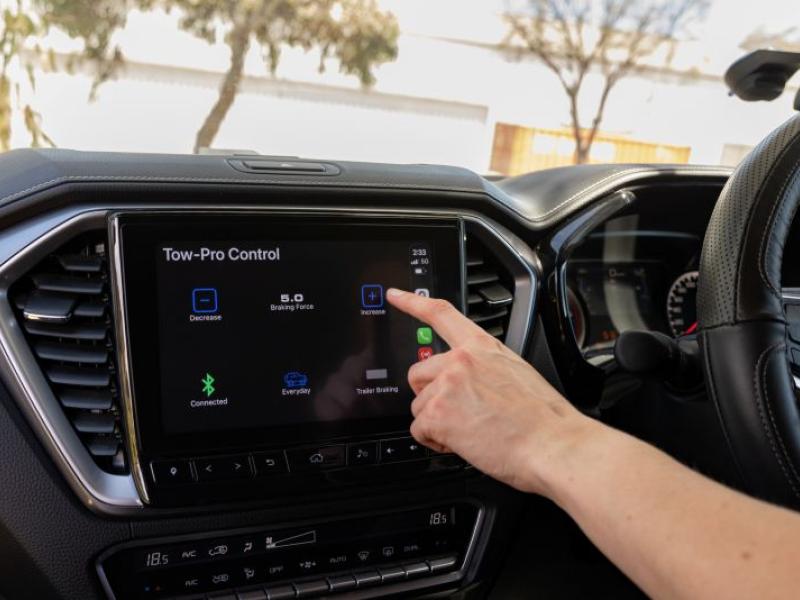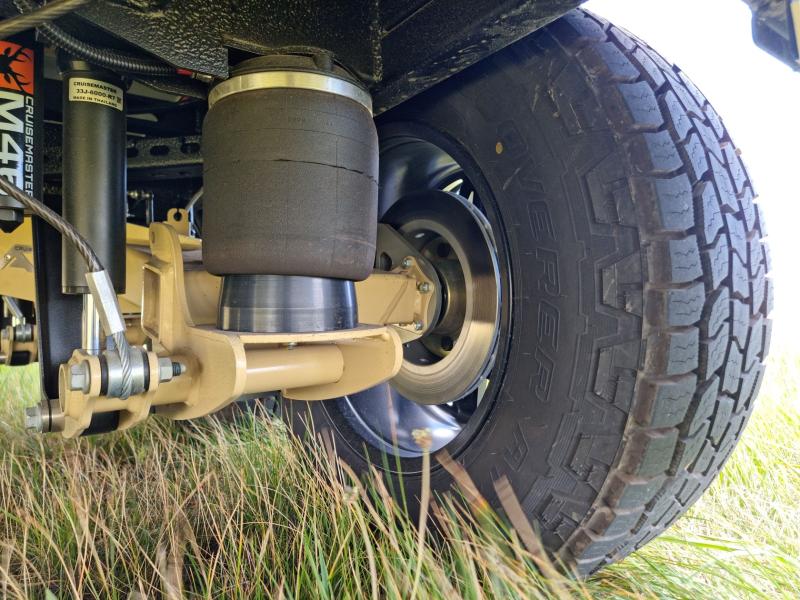It’s an image that will stay with me for the rest of my life. After focusing on the narrow, torturous track for what seemed like hours, the floor of the river valley finally revealed itself in a riot of gorgeous Autumn colours.
This was Skipper’s Canyon at its best (an Easter weekend long, long ago) and as I took in the majesty of my surroundings all I could think was ‘Thank God, for brothers Maurice and Spencer Wilks who creating the Land Rover (that got us this far up the gorge), and the mechanic at Shaw’s Motors in nearby Arrowtown who had quickly diagnosed and expertly flushed out the clogged fuel filter the day before.
Had my young printer mate who owned (and who I was sharing the driving with) had his pride and joy serviced BEFORE we headed for Q-town, the clogged filter –and with it the kicking, bucking, missing and general farting about from the engine before it finally gave up the ghost at the bottom (it’s always the bottom isn’t it?) of the Lake Hayes hill – would not have caused such heartache.
Oh dear!
Now of course it’s all part of my particular ‘Legends of The Fall.’ And last time he was home Michael and I laughed long and hard about it. But if I think hard enough I can still conjure up the ‘sick-in-the-pit-of-my-stomach’ feeling I had, as the oldest and supposedly most experienced member of our little group, the job of getting us ‘back on the road’ fell to me.
This, remember, was well before the days of cell phones, so all I could think of was hitching into (Arrow) town and looking for a garage that – might – be open on Eastern Friday!
Fortunately, not only was Shaw’s open, they had a mechanic on duty AND a cool old WW2 GMC tow truck.
However, just as we started discussing how we were going to pay for a tow, old mate Kangaroo-hopped into the forecourt in the Series 11, having somehow managed to start and get it going just enough to buck, kick and wheeze the couple of km into town.
Having worked on plenty of similar local Landies our mechanic quickly ticked off the basics (fuel, spark, air) and having satisfied himself it was not a ‘dud distributor’ made a bee-line for the fuel pump and fuel filter.
And before we knew, albeit for the (at the time) wallet-emptying $24 fee, we were on the road again, Landie engine now rumbling away contentedly after what was obviously a long awaited (albeit impromptu) tune-up.
I was prompted to tell this particular story because I’m sure it is typical of many such ‘oh shit’ occurrences, easily avoidable had we worked through a check-list of basics BEFORE we left home.
Handy Hints
To that end I have come up with a number of ‘Handy Hints’ even the most experienced amongst our brethren will benefit from being reminded of.
1) Don’t skimp on regular service intervals
These really are the ‘Ground Zero’ of safe and enjoyable off-roading your 4WD. Whether it is a franchise dealer, specialist 4WD repairer, or your good self, you owe it to yourself, your family, friends and even other road and off-road users to stay on top of basic maintenance.
2) Clean break
Build up habit – not to mention a rapport with your 4WD - by giving it some (cleaning) love on a regular basis. Sure there is certain street creed amongst mates and those in the know when you drive around for a few days afterwards with the muddy/dusty results of an epic trip worn like some sort of victory mask. But seriously, mud, grit and sand act like grinding paste on brake pads and rotors, bearings etc, and once inside water and dust does the same once they have worked their way past CV boots. A good high pressure spray wash from a commercial Wash World type facility is a good place to start. But I found when I was doing a lot of off-road motorcycle riding that buying a (in my case Briggs & Stratton) water blaster with steam cleaning function was the best way next step.
3) Engine, gearbox, transfer case
The main difference between your 4WD and any other vehicle on the road is the drivetrain. So it makes sense to look after it right? If you don’t believe me try tackling a favourite off-road loop in 2WD Hi.
I once got (embarrassingly) a 4WD Nissan Navara ute momentarily stuck on a gentle grass slope when a shower of rain dampened everything down at the annual Aussie V8 meeting at Pukekohe. Even with wide 0-offset (I know!) wheels and fat, chunky M/T tyres, with no weight to speak of in the tray, the things simply wouldn’t hook up in 2WD. So I had to resort to 4WD to avoid the arse end slipping down the slope and into the car parked next to it.
Crazy but true!
It also pays to check the basics – oil levels in the engine, gearbox (particularly if you are running an auto trans) and diff, and coolant levels – and add/drain & refill to max levels if required.
A snorkel is the latest fashion item for owners of 4WD D/C utes. But if you plan to take yours; off-rad and through water it would also pay to check whether diff breathers are standard or whether you need to add them.
4) Give me a brake
Discs were a real ‘brake-through’ in the evolution of the modern motorcar. And why manufacturers persist in using drums on 4WD utes etc I don’t know. If anything discs need more scrutiny and regular checks than drums though.
On average, for instance, my Terrano needs new front pads every 18 months to two years. And in the seven years I have owned it I have had to have the rear drums machined twice. SO it is always a good idea to regularly eyeball your front pads and rotors (when taking wheels on and off is a good time).
Callipers also age (pistons stick) prematurely if you don’t use your vehicle regularly, a common case with many recreational use 4WDs. So, again, it is always good insurance to check these regularly.
5) Shocking news
Good friend Hadley is one of those Nelson-born Cantabrians (if you know one you’ll recognise the following traits straightaway) who loves his rugby and his 4WDing in equal parts. A mechanic by trade but now a dealer to the stars he told me recently that in the immediate aftermath of the two major earthquakes in the province he was selling more replacement shock absorbers (for ordinary cars as much as 4WDs ) as he was air filters at the workshop he then owned.
If that was the case for daily drivers on the (admittedly earthquake-ravaged) city streets, imagine what a year’s worth of weekend trips into the backblocks does to the shock absorbers (not to mention springs, bushes and bearings) of your 4WD.
So keep an eye and ear out for thumping, banging and grinding that usually alerts you to a suspension issue.
6) Tyred and emotional
It’s happened to me before so it could also happen to you. Before you leave on any ‘big trip’ (i.e. out of the city or town where you have a support network) check the pressure of all five tyres…the spare being the one usually forgotten but not much use to you if it is holding less than 10psi like my was the last time I ran a gauge near it…
To sum up?
Sure you will usually find someone, no matter where you are, who can help you out of a ‘spot of bother’ of your own making. You are going to enjoy your 4WDing much more, however, if you are not ‘that guy’ and you turn off the main road confident that you are in a vehicle fit for purpose.
To read every story in the October 2017 issue of NZ4WD go to Zinio.com (Sept 22) or purchase your own hard copy at the Adrenalin store.






